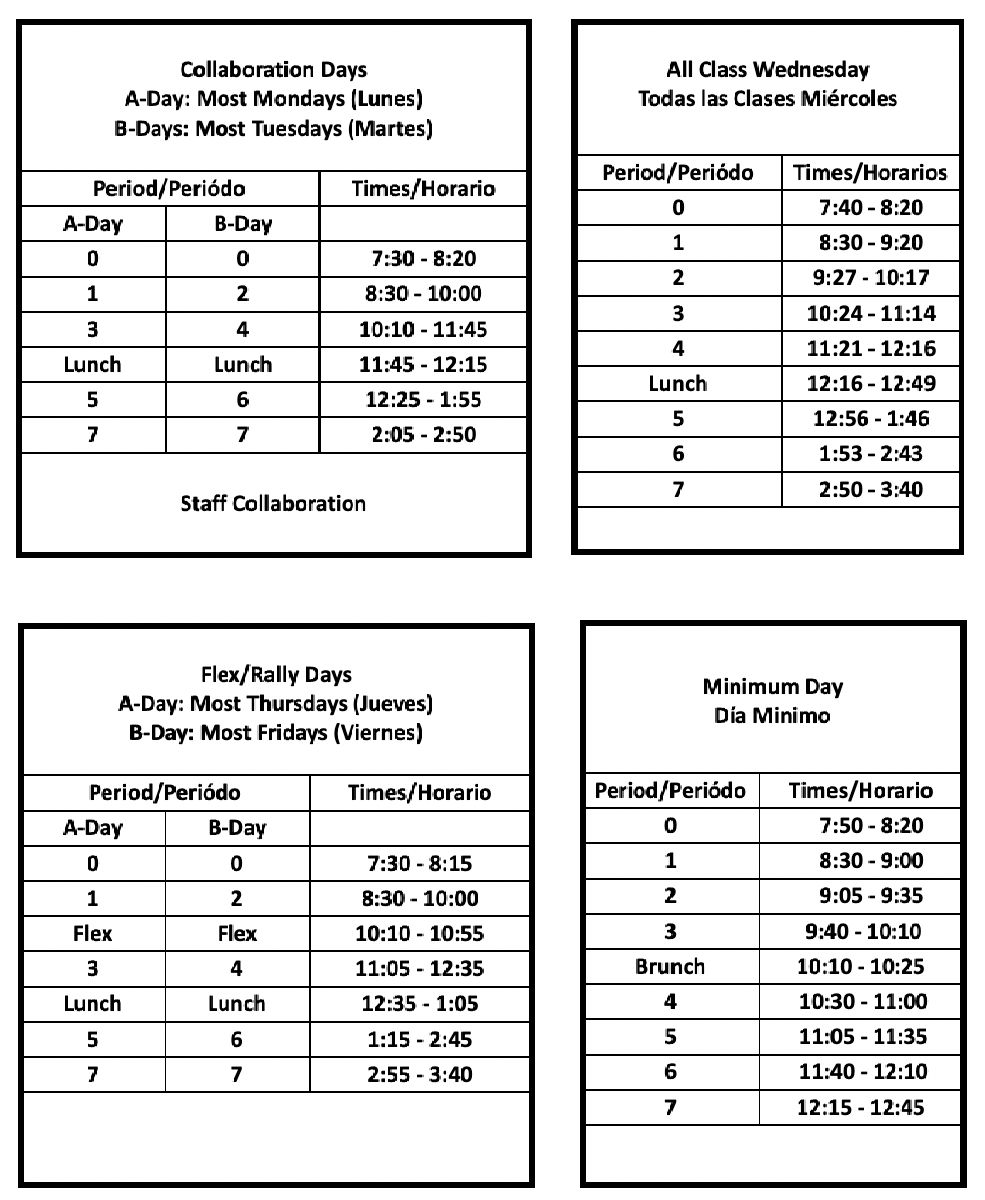A new school year brings change, and this year that change includes a new schedule. The new schedule aims to create more opportunities for teacher collaboration while maintaining instructional time as well as complying with statewide regulations.
A notable change is that block days now consist of 90-minute periods instead of the previous 100-minute classes. Brunch has been replaced by a 10-minute passing period. This is compounded by the shortened lunch period changing from 40 minutes to 30, leaving some students with not enough time to eat.
“I was really hungry because you have the 30 minutes, but then you need five minutes to get to the lunch spot, five minutes to find your friends, five minutes to get to your next class, [and] you end up with 15 minutes of eating. It’s really rushed,” sophomore Ellie Kapp said.
Other students feel that the new 30-minute lunch period is not an issue.
“I’d prefer it to be longer, but I think 30 minutes is sufficient,” senior Gavin Reynick said.
Despite these reservations to the amended eating times school administration still assures that students will be given ample time to nourish themselves.
“First, it’s important that everyone understand that Sequoia still offers two no-cost meals for all students, every day. The first meal can be picked up at the food services windows from 7:30 until the beginning of 3rd or 4th period,” principal Sean Priest said.
The dedicated brunch period’s removal was required to comply with state regulations.
“The California Department of Education, which audits the instructional minutes and bell schedules for schools, has strict guidelines about consistent timing for “passing periods”, which is what we call the time between classes. The extended “passing period” between the first and second blocks (what we called “brunch”) was no longer possible due to these requirements. We’re monitoring the number of meals distributed each day and comparing it with last year to better understand how we can make sure everyone eats. We don’t want anyone to go hungry,” Priest said.
The 45-minute period used for flex has been moved from before lunch to after first and second periods on flex days.
“I think I liked it before lunch better. I think it felt more continuous,” Kapp said.
Another change is Wednesday classes being extended from 40 minutes to 50 minutes.
“Last year I felt like we just basically got into class, the teachers had, like, 10 minutes, and then we had to leave already,” Kapp said.
Some teachers are also excited about this new change as in the new schedule they receive double the collaboration time compared to previous years.
“I do think that we could have a more substantive assignment that students could work on,” teacher Jesse Bustos said, “But before, I didn’t think [Wednesday class periods] were a waste either.”
According to Sequoia teacher Dayna Danielson, teachers use collaboration time to meet with their department to discuss curriculum as well as having other meetings that do not fit into their schedule.
Priest argues that collaboration time can be used in a variety of ways to help students’ education.
“Teachers will engage in a variety of collaborative activities such as analyzing the results of common assessments to help identify specific strengths and needs for students. In other words, let’s say the class in one teacher’s class scored higher on the first section of a quiz than another teacher’s class. With time to collaborate, the first teacher might share a lesson or idea that helped their students understand a concept that the second teacher can bring to their students. Ultimately, this means everyone finishes the year or semester with similar levels of mastery — and is prepared for next year,” Priest said. “Another outcome of collaboration is that teachers can create a variety of strategies, activities, and approaches when they work together. This helps us meet the unique needs of all students better.”
Some teachers are excited that the change will allow them to accomplish more during their collaboration time.
“I see so much more opportunity. Last year, we only had one day to [meet with each other], and most of those days were taken up by other matters,” Bustos said. “[Now], there are two days, and most teachers teach two different subjects, and so it’s a chance to meet with both subject teams.”
Some students are adverse to schedule changes in general.
“It kind of sucks, to switch it up in my final year, but I think they’re just trying to make [the schedule] the best it can be and solve the issues [with previous schedules],” Reynick said.
The changes have received mixed input from the school community.
“I prefer the way the schedule was prior, before we changed it,” senior Alejandro Bringuel said.
The long-term effects of the new schedule remain to be seen.
“I think it’s a little early. We really need to give it a chance,” Danielson said.


